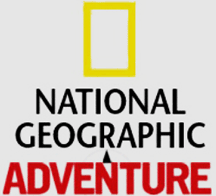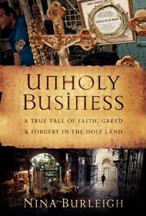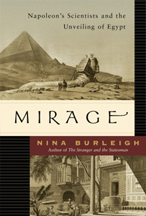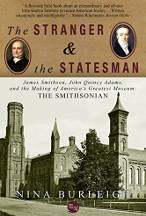
After a long winter with a new baby, my husband Erik and I needed to get away, preferably to another dimension. So we were relieved and grateful to get The Call. On ADVENTURE's $1,500 we could go someplace warm and do something athletic - preferably mountain biking, an activity that had been curtailed by the arrival of baby Felix. And nine months of being chained to feedings and changings made us eager to travel with the barest outline of a plan. We opened the atlas and zeroed in on Turkey.
I exchanged e-mails with a couple of Turkish outfitters, who generously suggested independent itineraries we could take on the southwestern coast. Known as Lycia, this stretch of the Mediterranean is easy to visit: It has an airport at Dalaman, English-speaking locals, and bikes for rent. Another critical consideration: The outfitters we contacted said that the area's back roads are so rough that the fearsome Turkish traffic would be light to nonexistent. We'd ride beyond the reach of tour buses, following mountain tracks to ancient temples and theaters in the interior, and try to navigate what we'd been told was a spectacular coastal trail.
We nabbed discounted tickets at www.cheaptickets.com for $640 each (New York to Zurich to Istanbul on Swissair; Istanbul to Dalaman on Turkish Airlines). You can fly direct from New York to Istanbul in ten hours on Delta or Turkish Airlines, but it costs up to twice as much, depending on the season. With our Lonely Planet guide listing hotel rooms for less than $40 a night, we figured a week of freedom could be ours for $1,500 each. We talked Felix's two grannies into sharing babysitting duties, smothered our son with kisses, suppressed parental guilt, and hit the road.
With layovers in Zurich and Istanbul, it took 20 hours to reach the Dalaman airport and nearby Dalyan, which is a tourist destination that still feels alien. Turkish names on the myriad hotel signs are reminiscent of a Star Trek episode. We passed the Volkan and the Zorlar before deciding on the Kilim, which had a freshly painted white façade and quiet location on the outskirts of town. A double bed, bath, and breakfast cost $20 for two.
The 16-room hotel was nearly empty. Even though the weather was sunny and mild, spring is considered the off-season. Hordes of tourists, mostly Brits and Germans, descend from June through September. To find the quiet and solitude we enjoyed in spring, all you have to do is bike - or hike - away from resort towns into the backcountry. For lodging, you can go into any village and ask a shopkeeper where to find the koy konagi - a private house whose owner will let you bunk for as little as a dollar a night, depending on your negotiating skills.
At the offices of Kaunos Tours in Dalyan we checked out our rented Turkish-made mountain bikes. The price was right ($30 for six days), but the rigs were in poor repair and heavy, and lacked suspension. (We'd have been far better off bringing our own bikes to Turkey.) Erik and I bolted the clip-on pedals that we'd brought from New York and rode down to the Dalyan River. On the far bank we saw a dozen or so ancient Lycian tombs that had been dug into a 50-foot-high cliff; some funerary chambers were simply squared-off holes, while others were ornate temples carved into the rock, complete with columns, and porticoes. In the days ahead, we would find these vertical cemeteries all over the countryside.
A flotilla of small tour boats bobbed at the dock, all idle. We asked a captain how much he would charge to take us downriver to the Sultaniye mud and thermal baths, where we hoped to erase our jet lag. The captain said ten dollars, we offered five: deal.
We loaded our bikes onto the boat and chugged a mile or so down to the baths. Except for the family tending the site, we were alone at the rudimentary spa, which consisted of a steaming swimming hole cupped in calcified rock, woven-reed privacy screens for undressing, and a kiosk selling soft drinks and tea. A sign listed an entrance fee that was equivalent to 50 cents, but no one asked for money. After a good soak, we were ready for more biking.
We'd heard about a trail that went west over the mountains and down to the harbor town of Candir on the Mediterranean. After a few false starts, we set off on a gravel track that took us past hundreds of buzzing roadside apiaries, and farmers and babushka-clad women on mopeds. As we entered a pine forest, we heard a strange clack-clack of turtle love nearly everywhere we rode.
It turned out we'd picked the right route. About eight miles from the baths, the track ended at the harbor town of Candir. For ten dollars, two teenagers agreed to ferry us on a small tour boat back to Dalyan.
For the next few days we used the town of Fethiye as our base of riding operations. As in Dalyan, there were so many hotels to choose from that we just wandered around until we found one that felt right. It wasn't the Doruk's charm that won us over (it's a concrete blockhouse) but its economics. Forty dollars bought us a double, a balcony overlooking the Mediterranean, and breakfast. Again, we were almost the only guests. The desk clerk seemed annoyed at the disruption of having to register us (he'd been watching a Bugs Bunny cartoon dubbed in Turkish on the lobby TV).
The next morning we set off in search of the coastal trail we'd been told went about 60 miles southeast down to Patara. Fueled only by ekmek (Turkish bread), honey, almonds, and some Clif bars from home, we pedaled up a grueling dirt-and-rock road that skirted cliffs and gorges. Along the way were stupendous views of the sparkling blue Mediterranean far below. Still, the trail did not lead anywhere near where we thought we were headed. Our "EuroMap of West Turkey" - the best cartographic source available -was accurate for highways but misleading for smaller population centers and secondary roads. (The Turkish army apparently considers data on dirt-and-gravel tracks to be a military secret.) Villages on our map never materialized; others that were not on the map suddenly appeared around a bend. Roads that were identified on the map as passable by car quickly disintegrated into goat trails.
One steep road took us from the town of Oludeniz up to the cliffside village of Faralya, where millions of butterflies flutter in a stunning gorge that can only be reached via a treacherously steep footpath. Far below is the Mediterranean; inland rises the forbidding summit of 6,480-foot Baba Dag -literally, "father mountain," or Big Daddy. Unfortunately, the Faralya Motel, which looks like a down-market version of Hearst Castle, wasn't open for the season. Too bad: it would have made a great base of operations. We could have hired a guide and ridden down to the shore or into the mountainous interior, then returned to relax in a pool overlooking the sea.
On the map, it appeared possible to continue southeast from Faralya down to Patara, so we headed up past crumbling rock terraces and the rude huts of goat herders. The trail petered out, but we never felt dangerously lost. We always ran into someone to ask directions: a farmer, a picnicking family, a solitary person walking along the mountain paths. We spoke no more than ten words of Turkish, but much can be accomplished by simply naming a town and following a pointed finger.
For the next few days we biked to archaeological sites selected randomly from our guidebooks. A steep half-day ride took us up to ancient Sidyma, which is now in a Turkish village called Dodurga. A guide named Rasik offered his services as soon as we rolled into town. We gave him a generous $20 because he insisted on carrying my bike on his back as he led us through fields and over low stone walls to the necropolis. After the tour, Rasik took us back to his house, where his wife Bedehar brought us tea and clover-shaped biscuits. Long silences ensued as Erik and I consulted phrasebooks, looking up words in a feeble attempt to make conversation.
Our hosts gazed at us and waited patiently for a word they understood. Across the road a mullah called the faithful to noon prayer. In the yard a rooster crowed. By the time we finished tea, we had learned that Rasik and Bedehar had two daughters in school and that the older girl likes to draw. As we said our good-byes, we had to step over an egg that the family hen had laid on the doorstep.
On another outing we ground up switchback after switchback to ancient Pinara. If I ignored the farmers in Ottoman-style baggy pants and the beasts yoked to plows, the landscape could have passed for southern California.
Just when my brain was about to burst inside my helmet from the exertion, a reward appeared around the final curve: a rock wall 1,500 feet high, pocked with burial vaults. Nearby, marble ruins crumbled in a green glade. A theater that once seated hundreds overlooked the fallen columns of a temple to an unknown deity. Goats grazed between carved sarcophagi nestled among wildflowers, the open stone coffins long empty of their esteemed dead.
As my breathing slowed I became aware of a chorus of bees making pine honey in the hills, the neck bells of goats, the faint click-clack of mating tortoises. There was no human sound until a faint noon prayer call floated up from the minaret of a village far, far below.
I wondered what Felix was up to.
Published in the July/August 2000 issue








Leave a comment